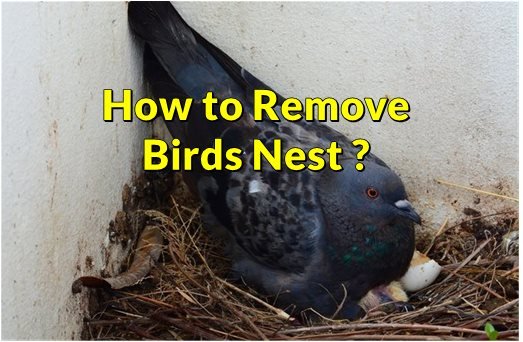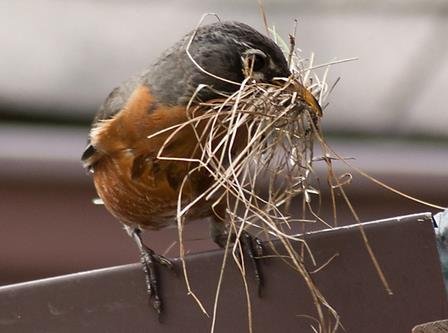Removing bird nests from your property requires careful consideration for your safety and to adhere to wildlife protection laws. Understanding the nesting season and recognizing when a nest has been abandoned are crucial first steps.
Birds build their nests in various locations, seeking safety for their young. When a nest is still in use or an active nest, it’s essential to know it’s illegal to remove it due to regulations such as the Migratory Bird Treaty Act.

Neither is it because the birds might hit you up, nor because you might fall from the ladder or stairs. It is because human seems to be prone of diseases that come from birds dropping in, around, and on its nest. Thousands of parasitic mites inhabit the bird’s nest since the birds have left somewhere.
What to Remember
When planning to remove a bird’s nest, it’s imperative to determine if the nest is active. Active nests may still house birds or eggs, especially during the nesting season. Removal at this stage disrupts the birds’ lifecycle and may also contravene laws like the Migratory Bird Treaty Act. If the nest is inactive, meaning long after the birds have left, it’s generally safe to proceed.
However, even if you believe the nest has been abandoned, consulting with a professional wildlife service can provide peace of mind and ensure compliance with all regulations.
In contrast, removing the bird’s nest with the eggs inside it requires extreme care, or you can destroy all the eggs.

In a nest, there would be many tiny white eggs, which can be quite offensive for the active birds that get to see their best removed. Some state laws discuss the disapproval of the removal of both active wrens and robins’ nests.
What to Avoid
When removing a bird’s nest, you must know the best time. Apparently, the best time to remove it is when the nest is being built. When you spend more time waiting for it, you will be closer to disrupting the whole animal and put yourself in danger.
That might explain why there is what people call the birds to nest removal service. As in the nest, so many ticks, bedbugs, fleas, and mites are transmitted from the birds. That is why, before removing it, you must decontaminate the nest using pesticides to avoid bad things happening to you. You need to avoid them by wearing your long sleeves or even trousers.

When you have been home, you must remove and wash them with water to kill any mites that remain in your clothes after applying the pesticide. You also have to protect your hands free from those parasites and mites. Thus, you have to wear latex gloves.
After using these gloves, you must remove them and wash your hands in soapy and hot water. It is because they can’t live when washed in hot water.
When you have successfully removed the bird’s nest, you can put it in your container and seal it properly so the pests can’t spread anymore. Sometimes you must plan the regular inspection to prevent any issues much earlier. These are what you need to remember and also avoid while removing birds’ nests.
Remember, the nesting season is a critical time for bird populations, and their nesting habits, including choosing to build their nests in human-occupied areas, are often driven by necessity. Understanding and respect for these natural processes are essential when considering nest removal.
In conclusion, while removing an abandoned bird’s nest may seem straightforward, several considerations should be kept in mind to ensure that you’re acting within legal boundaries and not causing unnecessary harm to wildlife.
Whether dealing with a nest during the nesting season or one that has long been vacated, taking the right approach is key to coexisting peacefully with our feathered friends.


